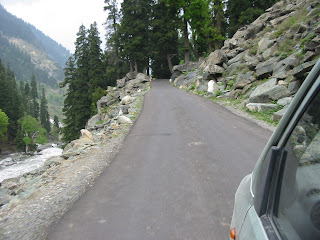Temple's Riches

The Lord's abode is in the news, because material treasures have been found in secret vaults under the temple precincts.
I can't help contrasting this event with the other incidents where treasure taken away from India have been merrily auctioned away.
If kings and chieftains elsewhere in India had also reposited / donated similarly, Indian history and civics and perhaps even geopgraphy would have been very, very different!
View this slideshow from a recent visit to Sree Anantha Padmanabha Swamy temple, this April.
"It is sad to see intricate jewellery and artefacts displayed in innumerable museums in the West when they should rightly be displayed at where they belong — our temples. How these treasures disappeared from India is narrated in Peter Watson's “Sotheby's: The Inside Story.” Let's hope that ruthless elements do not devour the treasures discovered in the vaults of the Padmanabhaswamy temple. We need to study the history of our country in its real glory rather than reading about it in history text books. The jewels should be displayed amid foolproof security just like the arrangements made for the Crown jewels in London...." says a writer to a newspaper.
About Peter Watson - An art journalist who "spent years investigating rumors that Sotheby's — along with Christie's, the hoity-toitiest auctioneering house — regularly sold artwork and artifacts that had been illegally exported from their mother countries. Sotheby's: The Inside Story traces Watson's sophisticated sting operations in Italy and India — complete with actors posing as art sellers, and Sotheby's higher-ups caught on hidden video cameras explaining their smuggling practices — that cast serious doubt on the auction house's denial of wrongdoing. ... Watson here elaborates his crusade against devious art dealing into a provocative, exhaustive, at times exhaustingly detailed account".
The author of Sotheby's: The Inside Story has also penned "The Medici Conspiracy" (read Exposing the Culture Theives)
Just today there was a mail message that says - "As soon as the first UPA government took charge, the Italian President was one of the first visitors to India. 15 agreements were signed without much publicity. One of the agreements stipulated that Italian companies be ‘consulted’ and allowed to manage all Indian archeological sites and antique stuff, with provision to take the stuff out of India if deemed necessary.... Sooner or later therefore, the Italians might step in in the matter of the Padmanabha treasures."
Scary!


"The Sri Padmanabhaswamy Temple of Trivandrum was governed by the Ettara Yogam, an association consisting of seven Brahmin families, one Nair noble, each of them with one vote in deciding the affairs of the temple, and the king of Venad with the right to half a vote [2]. Ettuveetil Pillamar were the leaders of the land and ‘tharakootams’ known as ‘Arunootavar’.[citation needed] (the military setup of Nairs) established for maintaining law and justice in Venad..."
ReplyDelete"The Ettuveetil Pillai System, aided by the Ettara Yogam, became supreme power in Travancore to such an extent that the sovereign needed their permission even to construct a palace for himself at his capital [4]. With so much power in their hands they wished to do away with the Royal House and all the earlier chroniclers of Travancore history have stated that their chief intention was to extirpate the Royal House and convert the state into a republic, and eventually under a monarchy under one of themselves [5]. With this in mind they plotted and assassinated Maharajah Aditya Varma by poisoning him and set the Palace on fire [6]."
"The Eight were either killed or exiled after sufficient evidence of conspiracy and murder was procured. Their houses were dug up and all their assets and armies seized by the victorious Marthanda Varma. Their women and children were sold as slaves to the fishermen of the coast (With the exception of the womenfolk of Chempazhanty Pillai's family as his sister, known as Chempazhanthy Ammachi had on a previous occasion given shelter to the king while he was in exile and protected him from her brother). "...
Full story at http://en.wikipedia.org/wiki/Ettuveetil_Pillai
Most stories of hidden treasures have a violent history of human sacrifices and bloodshed attached to them - and in almost all of them women and children could have bore the brunt of such violence. This treasure is no different. There's hardly anything to rejoice here.